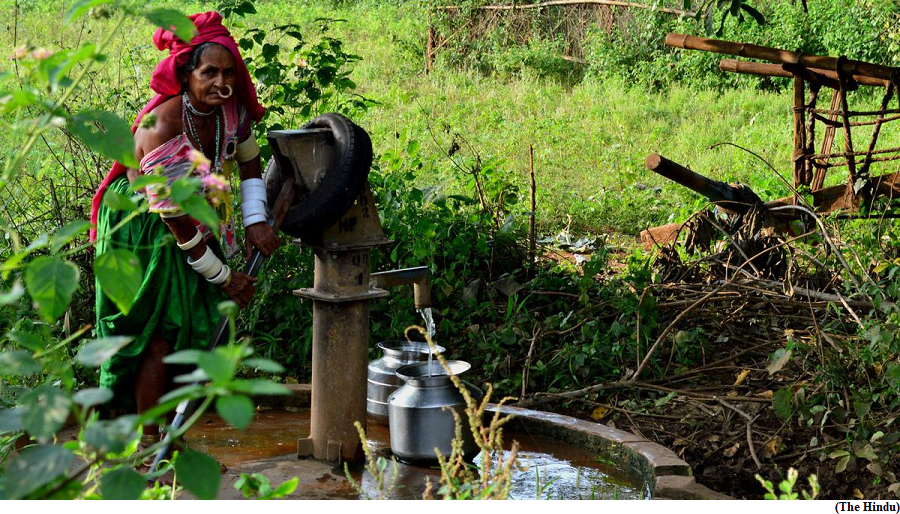Even limited arsenic exposure can mar cognitive ability, study (GS Paper 3, Science and Technology)

Why in news?
- A recent study suggests that even low levels of arsenic consumption may impact cognitive function in children, adolescents, and young adults.
Details:
- The research study is part of a bigger investigation into how a range of environmental and biological factors affect neurological and cognitive development in young people.
- It has also found that those exposed to arsenic had reduced grey matter (brain tissue that is vital to cognitive functions) and weaker connections within key regions of the brain that enable concentration, switching between tasks, and temporary storage of information.
Basics of research:
- Chronic exposure to arsenic could be creating a ‘silent pandemic’ affecting large portions of the global population.
- For their research, the scientists linked urine samples (to estimate arsenic exposure) performance in a battery of computerised tests (that evaluate cognitive function) and brain-images (that picturise various regions of the brain) of 1,014 participants from five regions across India.
- Arsenic exposure is particularly harmful to the poor.
Concerns:
- Since the 1990s, both the Central and State governments in Bihar and West Bengal have sought to address arsenic contamination.
- A common strategy employed is to encourage piped water access rather than groundwater extraction and install arsenic removal plants.
Why has the RBI withdrawn Rs 2,000 notes?
(GS Paper 3, Economy)
Why in news?
- The Reserve Bank of India (RBI) has decided to withdraw the Rs 2000 denomination banknotes from circulation. But existing notes will continue to be legal tender.
- The central bank has advised the public to deposit Rs 2000 banknotes, which were introduced after Rs 500 and Rs 1000 notes were withdrawn during the demonetisation exercise six years ago, into their bank accounts and /or exchange them into banknotes of other denominations at any bank branch.

Why has the RBI withdrawn Rs 2000 notes?
- The Rs 2000 note was introduced in November 2016 under Section 24(1) of The RBI Act, 1934, primarily with the objective of meeting the currency requirement of the economy expeditiously after the legal tender status of Rs 500 and Rs 1000 notes was withdrawn.
- With the fulfilment of that objective, and once notes of other denominations were available in adequate quantities, the printing of Rs 2000 notes was stopped in 2018-19.
- The RBI issued the majority of the Rs 2000 denomination notes prior to March 2017; these notes are now at the end of their estimated lifespan of 4-5 years.
- In pursuance of the ‘Clean Note Policy’ of the Reserve Bank of India, it has been decided to withdraw the Rs 2000 denomination banknotes from circulation.
What is the Clean Note Policy?
- The Clean Note Policy seeks to give the public good-quality currency notes and coins with better security features, while soiled notes are withdrawn out of circulation.
- The RBI had earlier decided to withdraw from circulation all banknotes issued prior to 2005 as they have fewer security features as compared to banknotes printed after 2005.
- However, the notes issued before 2005 continue to be legal tender. They have only been withdrawn from circulation in conformity with the standard international practice of not having notes of multiple series in circulation at the same time.
MoU signed for ‘Riverine Based Religious Tourism Circuit’
(GS Paper 1, Art and Culture)
Why in news?
- Recently, a Memorandum of Understanding (MoU) was signed in Guwahati, Assam for the development of ‘Riverine Based Religious Tourism Circuit’ among Inland Waterways Authority of India (IWAI), Sagarmala Development Corporation Limited (SDCL), Assam Tourism Development Corporation (ATDC) and Department of Inland Waterways Transport (DIWT), Government of Assam.

Key Highlights:
- The MoU will facilitate modern ferry service on a ‘Hop On Hop Off’ among seven (07) historic religious sites around Guwahati.
- The seven religious sites are Kamakhya, Pandunath, Ashwalknata, Doul Govinda, Umananda, Chakreshwar and Auniati Satra to be covered with the help of this agreement.
- The waiting lounge at the ferry terminal will be a modern facility providing comfortable ambience for the passengers.
Implementation:
- The project, executed via a Special Purpose Vehicle (SPV), is likely to completed with an investment of ₹45 crores and will be completed within 12 months.
- SDCL and IWAI will jointly contribute 55% of the project cost while the remaining will be provided by ATDC. DIWT has consented to provide the usage of Ghats near the temples free of cost for the project.




